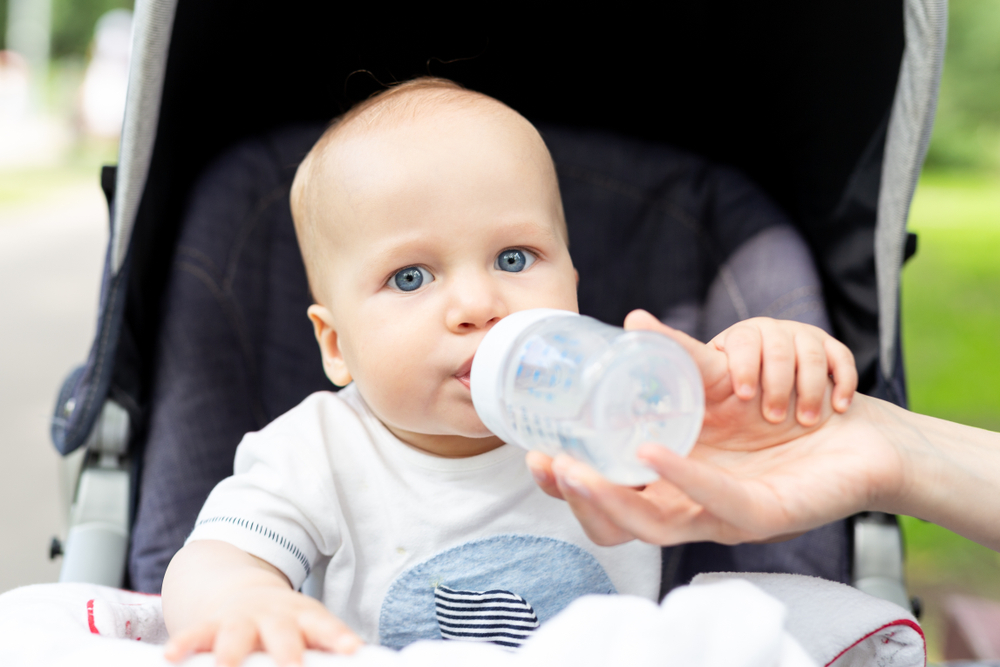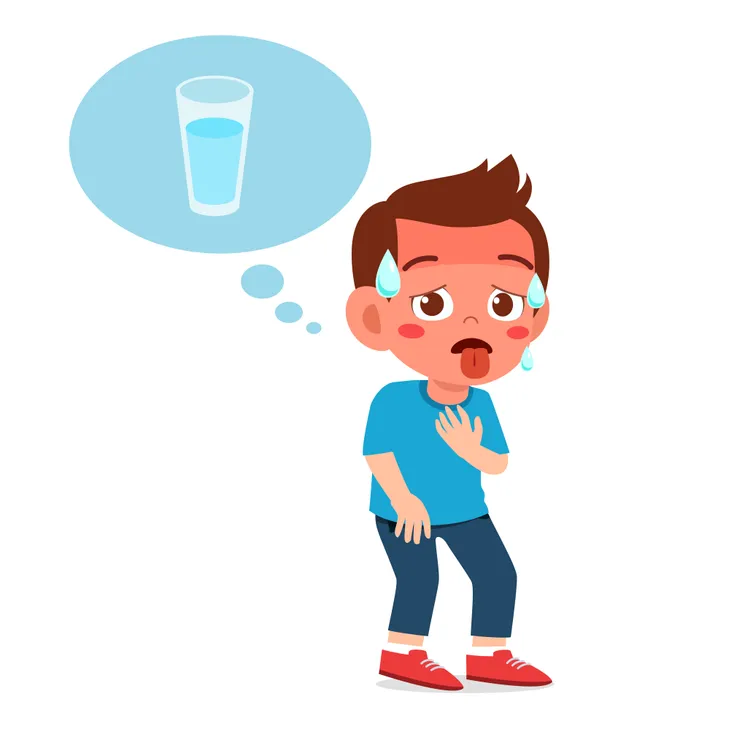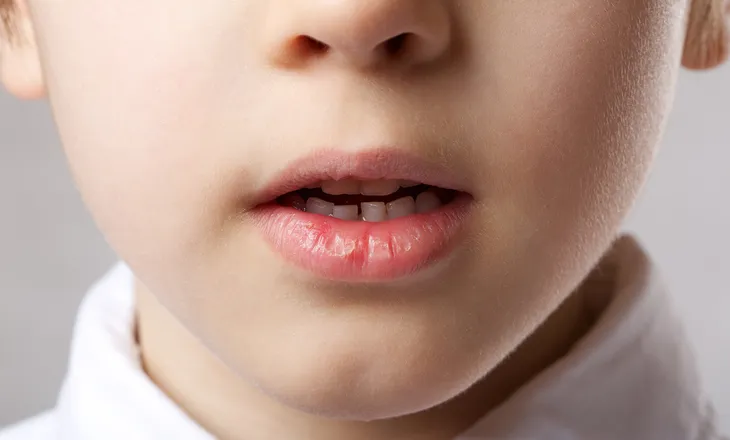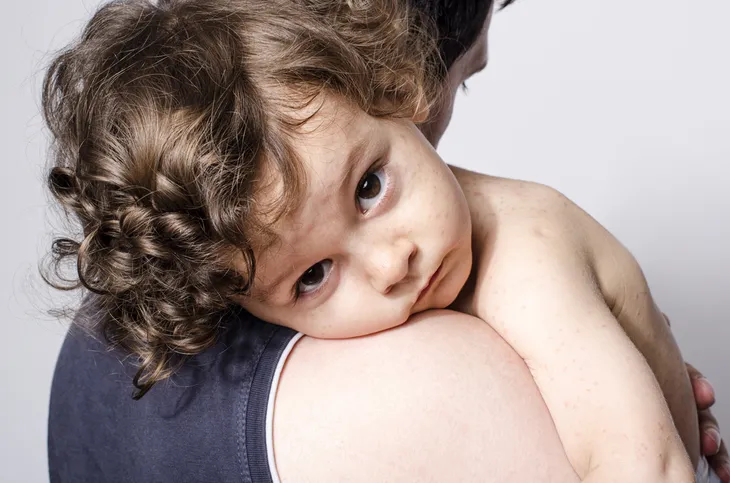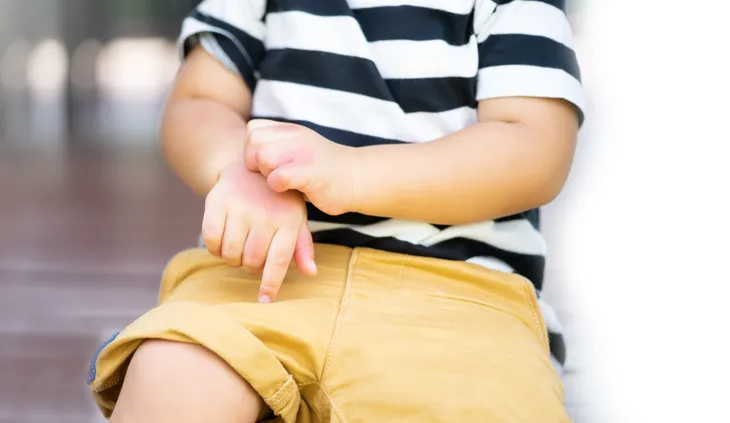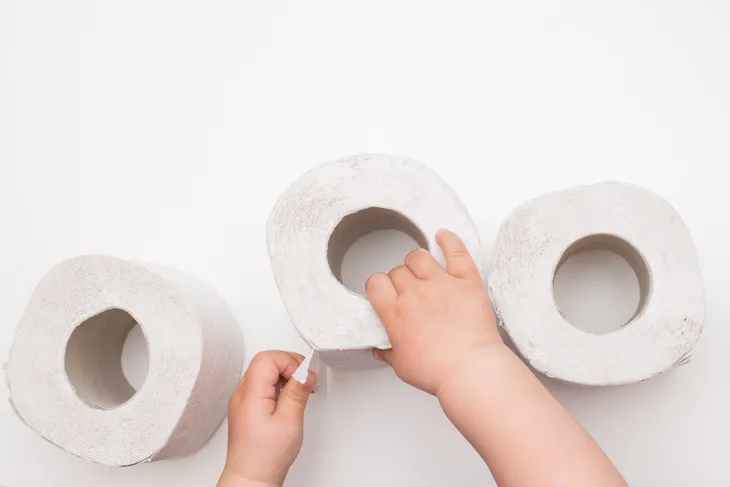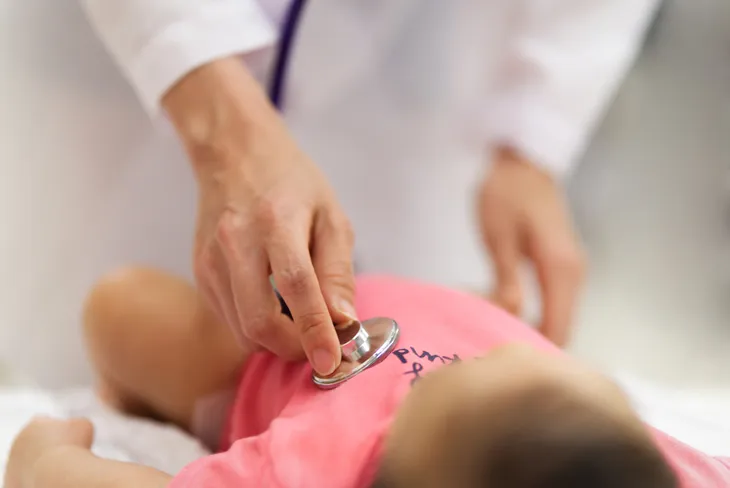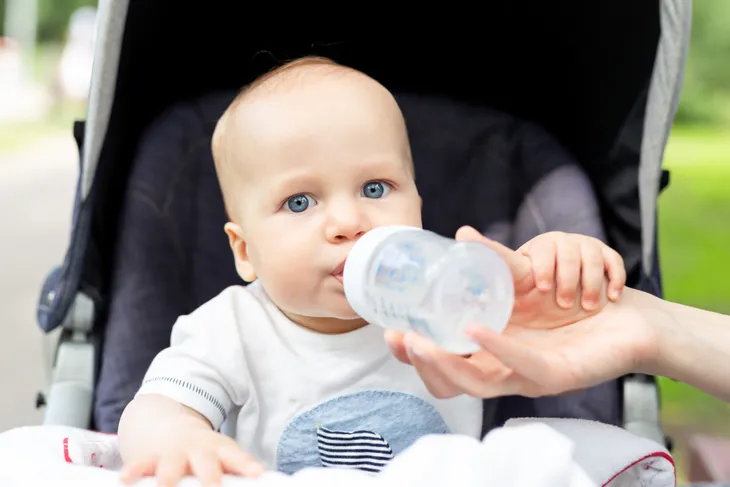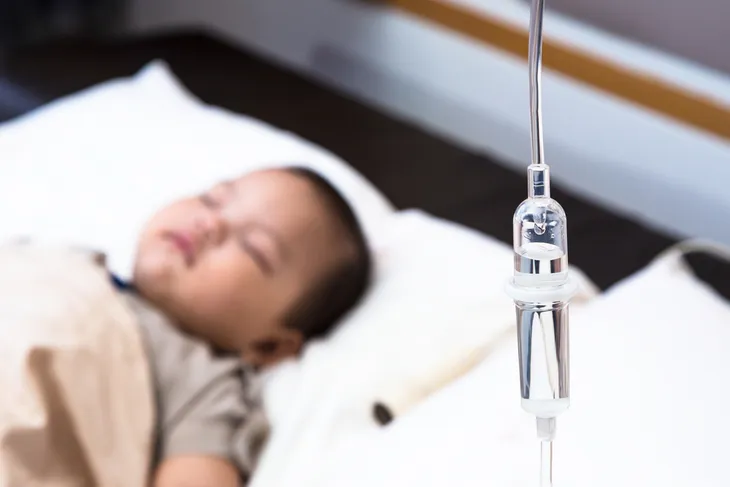Toddlers are one of the most resilient age groups when it comes to cuts and scrapes. They pop right back up after they fall and take on the next challenge. But when it comes to changes in their body’s fluid status, they are one of the most susceptible to dehydration. Dehydration is when the body’s fluid levels have decreased below their normal amount.
Dehydration can be caused by all sorts of things, including fever, illness, hot weather, not drinking enough, and exercise. Toddlers aren’t able to communicate like their adult counterparts which put them at a higher risk for becoming dangerously dehydrated. Here’s a list of the warning signs of dehydration in toddlers and the treatment options.
Thirst
Thirst is one of the signs of dehydration in toddlers. You might think it’s the first sign, but it’s actually a late sign. If a toddler is thirsty, they are already dehydrated says KidsHealth. The source also says “that’s why they should start drinking before they feel thirsty and have more fluids, even after thirst is quenched.”
According to the Children’s Hospital of Orange County, children should drink one 8-ounce glass of water per year of age. For example, 2-year-old toddler should drink two 8-ounce glasses of water per day, and a 3-year-old should drink three 8-ounce glasses of water per day. The source reports that this does not include other beverages, such as milk or juice, they would normally drink per day, and this volume is the minimum a child should drink.
Dark Urine or Decreased Urine Output
Another sign of dehydration in toddlers is dark urine or decreased urine output. Urine is supposed to be clear to light yellow in color. If the toddler is in diapers, you’ll notice that the inside of the diaper is dark yellow or brown because the urine has become concentrated from dehydration. If the toddler uses the toilet, you’ll see the same colors in the toilet as you would in a diaper.
Decreased urine output is harder to quantify than dark urine, especially if your toddler doesn’t use a diaper. Diapered toddlers will have less wet diapers when they are dehydrated. A toddler that uses a toilet will go eight to twelve hours without urinating. If you notice either of these signs of dehydration, it’s time to take action to prevent it from becoming more severe.
Dry Lips and Mouth
Have you been sick with a fever and felt like your mouth and lips were so dry you couldn’t take it another second? Well, that was likely because you were dehydrated, and toddlers can experience the same thing. Although not always related to a fever, dry lips and mouth, are a classic sign of dehydration in children and need to be taken seriously.
Your mouth, tongue, and lips are sensitive to fluid changes within the body. If there are small cracks in the mouth or lips, a toddler might not want to drink fluids that are acidic, such as orange juice because it can sting. You should talk to your child’s doctor to help determine the best way to rehydrate your toddler.
Crying Without Tears
When a toddler’s body becomes dehydrated, it cannot function as it normally should. This includes not being able to produce tears when crying. Because of a toddler’s small size, they also have smaller fluid reserves, says The Hospital for Sick Children. Dehydration can happen slowly over the course of days or weeks, or it can happen quickly. It depends on the cause of dehydration and the child.
There’s nothing more heart wrenching than watching a toddler cry, especially when they can’t make tears. Try your best to soothe the toddler and treat their dehydration quickly. The treatment of dehydration is based on how severe the dehydration is, which we will go over later in this article.
Low Energy
Toddlers are known for their constant energy and enthusiasm. They run around nonstop getting into all sorts of trouble while looking at their caregivers with their sweet innocent eyes. When a toddler stops running around and seems to have less energy, it might be time to take a second look at them.
Low energy can be caused by multiple factors, including fever, illness, and dehydration. If a toddler doesn’t have enough fluids within their body, it will make them feel tired and they won’t be able to maintain their normal energy levels. If your toddler is tired, sleeping for long periods, or has difficulty getting moving, than it’s time to put a call into your doctor’s office to get things sorted out.
Irritable
An irritable toddler is an unpleasant toddler to be around. Since toddlers aren’t always able to clearly communicate their needs to their caregivers, being crabby and irritable is one way to let the people around them know they aren’t feeling well. If a toddler is fussier than usual for no clear reason, it could likely be related to dehydration or another illness.
It can be hard to get an irritable toddler to drink fluids. Try to be creative with how you get your toddler to drink. Use fun cups or distractions to help them drink. If all else fails, it’s time to call your doctor for a better solution to get your toddler healthy.
Sunken Eyes
A late sign of dehydration is sunken eyes reports Healthy Children. Sunken eyes are described as when the skin under the eyes becomes dark, depressed, or hollow. It can happen when someone is tired, sick, or dehydrated. It can happen naturally as we age or from dramatic weight loss but it’s not a normal sign in toddlers.
When you look at a toddler and are trying to determine if they are dehydrated, you need to look at the whole picture, not just a single symptom. Sunken eyes can be a significant finding, and when you put it together with other symptoms, such as low energy and no tears you likely have a seriously dehydrated toddler. These signs are serious and need to be addressed immediately.
Cool, Dry Skin
You look at a tired and sick toddler and notice that their skin is also cool and dry. It should probably make you start thinking that they are dehydrated. When your body loses fluids it works differently. One of the changes it makes is to focus its efforts on supporting your vital organs, and your body doesn’t consider your skin a vital organ (the brain, heart, and lungs take priority).
When you’re dehydrated, your body will prioritize blood flow to those vital organs and bring less blood to your skin. This can make your skin cold and dry. It is also a late sign of dehydration. When a toddler’s body is making decisions on which areas to bring blood to and which areas to sacrifice, you have to realize that things are serious and this toddler is very sick.
Diarrhea and/or Vomiting
Diarrhea and vomiting are both a cause and a sign of dehydration. As you can imagine, when a toddler has the stomach flu and is vomiting and/or having diarrhea, they are not holding onto the fluids they are putting in their body and likely losing fluids faster than they can replace them. This scenario can spiral downward fast, if the caregiver doesn’t quickly intervene.
If you’re dealing with a sick toddler who’s vomiting don’t give them anything to drink, at least not right away. If the vomiting has been limited to a short period of time, let them recover for a few hours before you give them fluids. Drinking right after vomiting will most likely cause them to vomit again. After a few hours offer a few sips of fluids and wait to see how that goes. If it goes well, you can give them a little more. With diarrhea, you don’t need to be as cautious. You can give fluids right away, just steer clear of dairy or sugar-filled drinks.
Fast Heart Rate or Fast Breathing
The last sign of dehydration we’re listing is fast breathing (known clinically as tachypnea) and a fast heart rate (known clinically as tachycardia). This can be a confusing sign for some people to understand, as when a toddler runs around they’re breathing fast and have a fast heart rate. But once they stop running, their breathing and heart rate will normalize, which is not the case with dehydration.
A toddler who is laying down on the couch watching TV and breathing fast and has a fast heart rate is sick. Their body is working extra hard to just keep up with minimal activity. If you see a toddler who is this sick, they likely are dehydrated and perhaps have more going on in the illness department. Don’t ignore this sign, call your doctor right away.
Rehydration
A toddler who is mild to moderately dehydrated needs to replace the fluids they have lots. This can be done by giving them an oral rehydration solution, says KidsHealth. Also known as electrolyte solutions, these drinks contain special additives that your body needs when it’s lost a significant amount of fluids.
Start by giving the toddler just a few sips of the drink every few minutes. When that is being tolerated well, you can slowly increase the volume. The source says, “Do not give a dehydrated child water, soda, ginger ale, tea, fruit juice, gelatin desserts, or chicken broth. These don’t have the right mix of sugar and salts and can make diarrhea worse.” Once the child is rehydrated, you can restart foods.
Doctors Office or Hospital
For most mild cases of dehydration, caregivers can manage the toddler from the comforts of their own home. However, if the toddler has an underlying condition, call your doctor right away to get specific advice for their situation. If you are treating the toddler and you don’t see any improvement or the dehydration is getting worse, it’s time to make a call to your doctor or to go to the nearest hospital. Your toddler might need intravenous fluids to manage their dehydration.
Dehydration can be a simple condition that can be easily managed with fluids and rest. But sometimes this simple condition can quickly escalate and cause serious effects, especially when it involves toddlers. If you have any questions on how to properly manage dehydration don’t hesitate to ask your doctor, they will be able to provide you with clear instructions based on the toddler’s needs.
